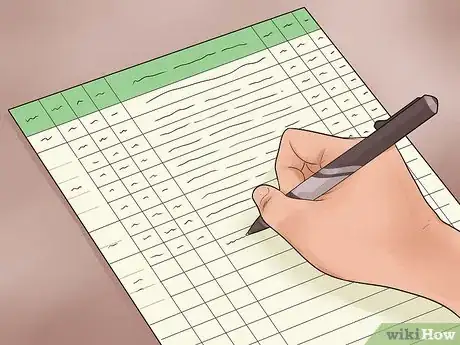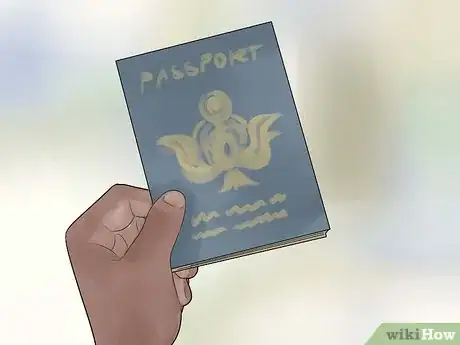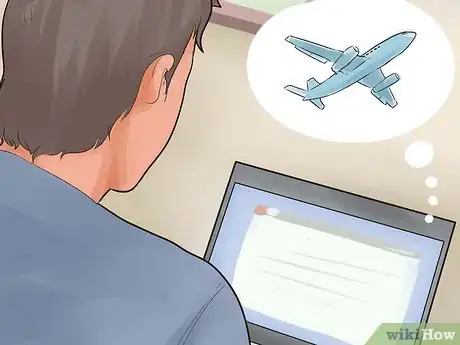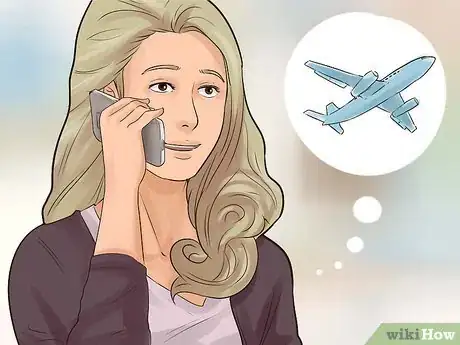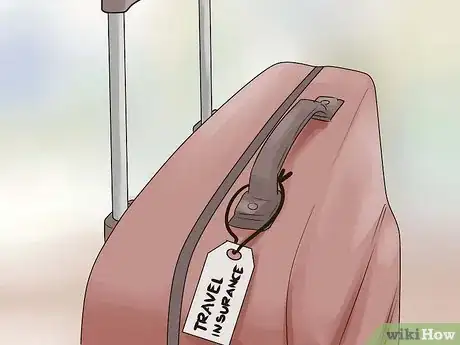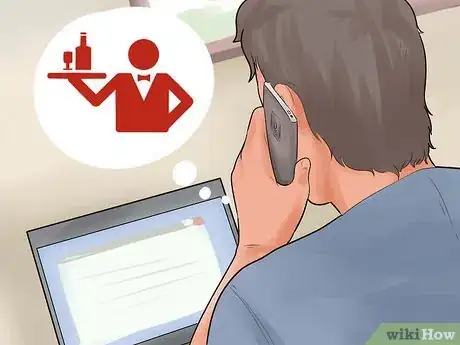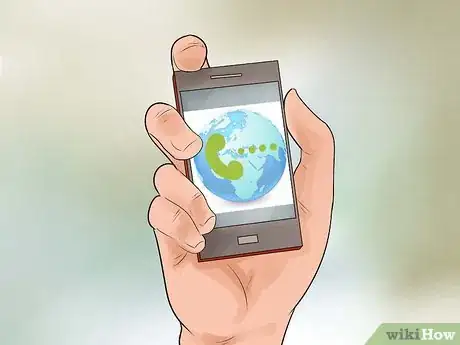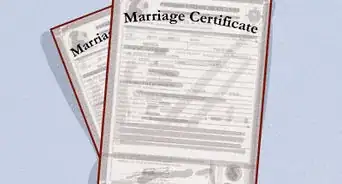This article was co-authored by Alison Hotchkiss. Alison Hotchkiss is an Event Planner and the Founder of Alison Events Planning, Design, and Travel based in Sausalito, California. With over 21 years of experience, she specializes in planning luxury travel for clients in both the honeymoon and leisure travel sectors. Alison Events Planning, Design, and Travel was named as one of Vogue’s best wedding planners around the world and is at the top of the list of wedding planners for Goop, Brides, and Martha Stewart Weddings. Alison received a Bachelors degree from Colorado State University.
There are 47 references cited in this article, which can be found at the bottom of the page.
This article has been viewed 27,379 times.
Australia is known for its great cities, spectacular wildlife, and beautiful beaches.[1] [2] It is the sixth largest country in the world, and the only country that is also a continent.[3] Australia is home to over 22 million people, the majority of whom speak English, and the climate ranges from arid and semi-arid in the center, temperate in the south and east, and tropical in the north. Australia is a huge country and there is a lot to see and do. Make the most out your trip to Australia by beginning planning and preparations, including applying for a passport and visa, making an itinerary, and booking flights and hotels at least 4 to 6 months in advance.
Steps
Planning for Your Trip
-
1Discuss your plans with family and friends. When planning to travel anywhere, especially internationally, it is important to first discuss your plans with family and friends. They might be able to give you valuable advice on planning a trip abroad. Throughout the planning process, select one or two family members or trusted friends to keep updated on your travel plans. Being able to talk to someone about your plans and brainstorm ideas will make the planning process easier.
-
2Research your destination. Make the most of your experience in Australia by researching cities, festivals, historic sites, beaches, national parks, and transportation times and options in advance. Look-up major holidays, festivals, and celebrations for different regions or cities in Australia. Research the weather for the time of year in which you plan to visit Australia.
- Canberra is the capital of Australia and location of Parliament and the Central Government. Australia includes 6 states (New South Wales, Queensland, South Australia, Tasmania, Victoria, and Western Australia), each with their own capital, and 10 territories (Ashmore and Cartier Islands, Australian Antarctic Territory, Christmas Island, Cocos Islands, Coral Sea Islands, Jervis Bay Territory, and Heard and McDonald Islands).
- Major Australian cities and their locations include: Sydney (New South Wales), Melbourne (Victoria), Brisbane (Queensland), Adelaide (South Australia), Perth (Western Australia), Darwin (the Northern Territory), and Hobart (Tasmania).
- Australia is divided into six climate zones characterized by differences in average seasonal temperatures, rainfall, humidity, and vegetation: tropical (north), equatorial (far north), subtropical (east coast), desert (southern coast and most of the center), grassland (surrounding desert in the center), and temperate (southeast and southwest coasts).[4]
- Purchase or check out from a library a guide book of Australia. General guide books include Lonely Planet's Australia and East Coast Australia; the Rough Guide to Australia offers personal and candid accounts of experiences in Australia and is recommended for experienced travelers; and Insight Guide Australia includes information on Australian history, culture, and customs.[5]
Advertisement -
3Create a travel Bucket List. Compile a bucket list with 5 or 6 things you really want to do or see, and use this as a starting point for planning your trip. Remember to be realistic when planning and stick to your budget - Australia is a big place and might take over a day to travel between major cities or destinations.
- Most of the major tourist destinations, such as the Great Barrier Reef, and largest cities, including Brisbane, Melbourne, Sydney, and Canberra, are in the eastern part of the country along the coast.
- Australia is home to 19 UNESCO World Heritage Sites, including the Great Barrier Reef, Sydney Opera House, and Ayers Rock in the Uluru-Kata Tjuta National Park.[6]
- Australia was first inhabited by the the Indigenous Aboriginal community over 40,000 years ago. Australian Aboriginal culture is incredibly diverse. In the 18th century, over 1 million Aboriginal people occupied Australia, organized into 300 clans and speaking over 250 languages. Kakadu National Park in the Northern Territory is one of the best sites to visit Aboriginal art and culture sites.[7] The National Gallery in Canberra showcases 13 galleries devoted to Aboriginal art.[8]
- History buffs can learn about Australia's history as a penal colony for Great Britain at Fremantly Prison near Perth. The Historic Port of Echuca on the banks of the Murray River in Victoria offers living history related to 19th century life, trade, and shipbuilding in southwest Australia.[9]
- Australia is home to some of the best beaches in the world, such as the Twelve Apostles beach in Victoria,[10] You can also swim with rays at Dolphin Bay in South Australia, take a break from Sydney at Bronte Beach, or visit Aireys lighthouse at Eastern View beach in Victoria.[11] You can also rent a car and leisurely stop at beaches and destinations along Victoria's Great Ocean Road.[12]
- Wildlife and nature buffs can experience Australia's unique flora and fauna by catching a glimpse of crocodiles in Kakadu National Park in the Northern Territory,[13] searching for wombats and platypus in southeast Australia,[14] or swim with whale sharks in Ningaloo Reef in Western Australia.[15]
- For wine and food aficionados, South Australia is home to Australia's world-famous wine region. You can tour wineries throughout the Yarra Valley, located a short drive from Melbourne.[16]
-
4Make a budget and start saving. Under-budgeting is one of the biggest mistakes a traveler can make.[17] Additionally, budget airfare or "all-inclusive" packages might look like great deals, but can contain additional or hidden costs (e.g. luggage, meals) that can quickly add up. When making a budget, it is important to consider the following:[18]
- Air travel: airfare, check baggage fee, airport parking (per day), and airport transfers.
- Transportation: travel within Australia (airfare, buses, trains), car rental, gas, and public transportation.
- Accommodation and meals: hotel or hostel (per person per night), breakfast, lunch, dinner, snacks, and tips.
- Sightseeing, tour and entrance fees, souvenirs and shopping, and entertainment.
- Other expenses such as travel insurance, passports, visa, currency exchange fees, and luggage.
- A good rule of thumb is to add $25 to $50 per person per day for miscellaneous travel expenses.
-
5Get organized by making an itinerary. An itinerary will serve as a guide when making travel plans. Once you've completed your research and put together a budget, make a list of everything you want to do and see. Make sure you account for travel time between places. Look up prices of attractions. Create a timeline based on how long you will be in the country and plot each day's destinations on a map.[19] An ideal Australian vacation would last between two and two-and-a-half weeks, and include sites in Sydney and Melbourne, as well as excursions to Uluru (Ayers Rock) and the Great Barrier Reef, and a trip along the Great Ocean Road.[20]
- You can start by downloading a travel planning app, such as Tripit.com or NileGuide.com.[21]
- Be realistic and do not cram in too much into a single day. Schedule down time during the day, make sure you get 8 hours of sleep per night, and give yourself enough time to travel between places.
- Make an itinerary that is flexible. Being able to make adjustments will help you deal with any unexpected travel delays.
-
6Apply for a passport. You need a passport when travelling to a different country.[22] If you are a United States citizen, applying for and receiving a passport can take 4 to 6 weeks, unless you pay an additional fee to expedite the process. You can apply for a passport by downloading and printing the form (form DS-11 if this is your first passport, form DS-82 for passport renewal) from the U.S. Department of State's website, filling it out, and either mailing it in (renewals only) or dropping it off at a designated U.S. passport acceptance facility.
- To find an authorized passport acceptance facility, go to travel.state.gov and click on "U.S. Passport". Under the "Your U.S. Passport" tab in the upper left corner, click on "Where to Apply". This will bring you to a page that lets you search for authorized facilities by state, city, or zip code.
- When applying for a passport, you will need: proof of U.S. citizenship such as your birth certificate, previous U.S. passport, certificate of naturalization, or consular proof of birth abroad (original documents only, photocopies will not be accepted); photo identification (valid driver's license, valid government ID, valid military ID, or undamaged U.S. passport issued in the past 15 years); and two copies of a 2x2 inch color photo taken within the past 6 months, printed on photo-quality paper, and which meet additional requirements outlined on the travel.state.gov website.[23]
- Passport fees must be paid at the time of application. You can pay using personal checks, money, or cash.[24] Basic fees include $110 for an adult passport book, and a $25 processing charge. Additional fees include $60 for expedited service, $14.85 for overnight delivery, and $30 for an adult passport card.
-
7Apply for a visa. In addition to a passport, Australia requires American tourists, students, business persons, etc. to obtain a visa to enter and remain in the country for any length of time. Visa requirements and fees differ by country, and frequently change. Whether you are planning a trip to Australia or anywhere else in the world from the United States, it is important to check the American's Traveling Abroad page of the U.S. State Department Website for country specific information.[25]
- U.S. citizens with a valid passport can apply for and purchase an Electronic Travel Authority, or ETA, online for $20.[26] An ETA allows you to enter and leave Australia at anytime during a 12-month period and remain in the country for no longer than 3 months at a time.[27] Most ETAs take less than 12 hours to process.
- Certain individuals are ineligible for an ETA, including those who have tested positive for tuberculosis or been convicted of a crime and served a 12-month or longer sentence are ineligible.[28] HIV/AIDS positive visitors may also encounter certain restrictions or be required to undergo a medical exam prior to entering Australia.
Booking Your Trip
-
1Compare airline prices online. Start searching for plane tickets several months in advance. You can compare prices from multiple airline carriers using a website such as kayak.com or cheaptickets.com. During non-peak seasons, expect a plane ticket from the U.S. to Australia to cost around $1500 (includes taxes and fees). If you prefer to fly a specific airline, it is best to book tickets directly through them either by phone or online.
- Keep your travel dates flexible to take advantage of reduced airfares. In general, flights are cheaper midweek (Tuesday or Wednesday) or on Saturdays.[29]
- Flights are usually 10% to 20% cheaper during the off-season, which in Australia is between early May to early June, and late July to late September.[30]
- Because of its size, the best way to travel within Australia is by airplane. Australia has several domestic airlines that offer regular, affordable flights between its major cities. Major domestic carriers include: Jetstar, Qantas Domestic, Rex, Virgin Australia, and Tiger Airways.[31]
-
2Book your plane tickets. Plane tickets can be booked online, by phone, or through a travel agency. Once you know your travel dates, go ahead and book your plane tickets. If possible, make seat reservations at the time of booking, especially if you are travelling with other people, or prefer a window or aisle seat.
- Most plane tickets are non-refundable once purchased. It is always a good idea to purchase insurance in case you need to cancel or reschedule your trip. Plans are usually offered for an additional fee at the time of purchase.
- Read through all ticket information, including possible additional fees for luggage, seat location, meals, etc.
-
3Book hotels or hostels in advance. Having a place to stay that is safe, convenient, and affordable will reduce stress and offer you peace of mind when travelling. You can also read reviews and compare hotel or hostel prices on online. Sites such as tripadvisor.com or lonelyplanet.com offer user reviews of accommodations. Hotels and hostels can usually be booked online, via email, by phone, or through a travel agency.
- Booking in advance is especially important if you are planning to travel to a city during a major festival, or during peak travel seasons.
- Print out and bring any receipts with you, as well as the credit card you used to make the booking. In case the hotel loses your booking or overbooks for that night, you have proof of your reservation and can demand a refund or alternative accommodations.
-
4Protect yourself and your luggage by purchasing travel insurance. Third party travel insurance, such as that offered through Access America or Travel Guard International, is indispensable when traveling to a foreign country such as Australia. Insurance not only protects you in the case of trip cancellation or disruption, but also reimburse for lost, damaged, or stolen luggage, and help cover medical costs or evacuation in case of an emergency or natural disaster. Prices vary based on where you are traveling and how long you will be in the country. Compare quotes and coverage before purchasing a policy, and make sure you read the fine print.
- Before purchasing travel insurance from a third party, check and see if you current medical or life insurance policies will cover you when outside the U.S.
-
5Make any additional arrangements. Other things to consider booking well in advance include tickets for shows or attractions, reserving a spot on a tour, or planned excursions offered through a travel agency or organization.
- If you plan on eating out at a popular restaurant, try calling or emailing to make reservations in advanced.
- Make arrangements for things back home, such as childcare, pet sitting, or house sitting, at least one month in advance.
Preparing for Your Trip
-
1Decide what to pack. You want to pack efficiently, but not too lightly that you run out of clothes halfway through your trip or forget important documents or medication. Before you begin, make a list, dividing things into the following categories: important documents, clothing and accessories, personal items and hygiene, prescriptions and first-aid, electronic gadgets, and miscellaneous.[32] Gather everything together and lay it on your bed or floor. Start with clothing items and pack according to average weather conditions in Australia for the time of year (and region) you will be visiting. Coordinate outfits based on where you will be and what you plan on doing: hiking excursions, restaurants and museums, nightlife, beaches, etc. Select items that are versatile, especially clothing that can easily be "dressed up or down" depending on the situation.
- Maximize space by rolling items such as shirts, skirts, pants, and shorts or folding clothes together.[33]
- Save space in your suitcase by purchasing toiletries (e.g. soap, shampoo, conditioner, sunscreen, bug spray, etc.) in Australia. Discard these items at the end of your trip.
- Purchase durable luggage, especially if you will be traveling a lot within the country. Cheap luggage cannot withstand the wear and tear of international travel, and you might be stuck needing to buy a new suitcase in Australia.
-
2Pack for the season. Australia experiences four seasons throughout the country - winter, spring, summer, and fall - as well as a tropical wet season in the north.[34] Seasons in Australia occur at different times of year than in the United States. You will want to bring an umbrella and light clothes during the summer wet season (December to March), but pack for a variety of weather conditions during the other times of year. The seasons and what type of weather to expect include:[35] [36] [37]
- Summer (December to February) ranges from hot and humid in the north, hot and dry in the center and much of the east and west coasts, and mild/warm in the south. Average temperatures range from 90 to 100 degrees Fahrenheit to the north, center, and west, and are cooler (70 to 90 degrees) to the south and east. Many sporting events and outdoor festivals in east and southwest Australia occur during the summer months.
- Winters (June to August) are mild to the north, but cold throughout the rest of the country. Average winter temperatures range from around 26.6 degrees Fahrenheit in the southwest to 75 degrees in the far north. Skiing and snowboarding is popular this time of year in Victoria.[38]
- Spring (September to November) and Fall (March to May) are transition seasons, and the weather can be highly variable. However, the dry season from May to October is the best time to experience clear skies in the tropical regions of northern Australia.[39]
-
3Review customs laws and regulations. Avoid having items confiscated or having to pay tariffs or taxes by reviewing Australian customs laws and restrictions regarding declaring items, paying duties, and prohibited goods.[40] You are required to fill out an Import Declaration form for goods you are bringing into and leaving in the country worth more than 1,000 AUD. You are required to pay duty and taxes on goods such as tobacco or alcohol regardless of their value. [41]
- Examples of restricted or prohibited imports include: firearms, endangered animal and plant species, certain dog breeds, laser pointers, electric fly-swatters or mosquito bats, pornographic material, and certain antibiotics.[42]
-
4Get an international phone plan. In order to contact hotels, people, or restaurants while in Australia, or call friends and family back home without racking-up a huge cellphone bill, it is smart to purchase an international phone plan or phone card in advance. If you have a smartphone, services such as Skype mobile or Google Voice allow you make international or domestic calls for a small fee (often around several cents per minute) as long as you have an internet connection. If you can easily remove and exchange the sim card from your phone, consider purchasing a prepaid sim card once you arrive in Australia.
- In emergency situations, most American cell phones work in Australia. Contact you cell phone service provider prior to leaving to ask about international plans or costs and fees associated with calls outside of the U.S. or Canada.
- Be aware of time differences when attempting to call family or friends back home. Australia is divided into three separate time zones.[43] The East Coast of the U.S. is 13 hours behind Western Australia and 16 hours behind New South Wales and Sydney. Add three hours for places on the West Coast of the U.S.
-
5Double check to make sure you have all important documents. You do not want to leave an important document behind - this can cause travel delays or even impact your ability to enter the country. Also, store important documents such as passport, visa, cash, and credit cards in a secure location (such as a neck wallet or money belt) and bring it with you on the plane. Never pack important documents in your checked luggage in case your luggage is delayed, lost, or damaged.
- Examples of important or necessary documents for traveling to Australia include: passport, visas, credit card you used to book hotels or airfare, credit and ATM cards, cash (USD and AUD), E-tickets, hotel information and reservations, driver's license, guidebooks, and prescription drug information.[44]
- Make copies of all important documents and keep them together in a folder in your checked luggage (take the originals with you on your carry-on).
-
6Pack a carry-on for the plane. Your carry on should include important and necessary documents, a change of clothes, and other essentials such as travel-size toothpaste and other toiletries.[45] These will come in handy in the event your flight is delayed or your luggage is lost. Check the airline in which you booked tickets through for carry-on allowance (size, number, weight). Most airlines allow a small carry-on piece and a personal item such as a purse or briefcase.[46] Attach a luggage tag to any carry-on items.
- Check airport and airline restrictions on carry-on items, such as liquids and gels, or items such as pocket knives or nail clippers.[47]
-
7Check into your flight. Give yourself plenty of time to make it to the airport, check your luggage, and go through security. For international flights, it is recommended you show-up at least 2 to 3 hours before your flight leaves.
- Text or email updates.
- Check airport website for flight updates.
Warnings
- If possible, do not travel alone. Traveling is always more fun and safer when you have a travel companion.⧼thumbs_response⧽
- Never leave luggage or personal items unattended.⧼thumbs_response⧽
- Do not approach wildlife and always keep a safe distance. If bitten, seek medical attention immediately. Australia is home to several species of poisonous snakes and spiders, and keep an eye out for jellyfish when swimming, snorkeling, or diving in the ocean.[51]⧼thumbs_response⧽
- Dry conditions coupled with hot winds during the spring months make southeast Australia prone to brush fires and forest fires. If traveling during the dry season, keep an eye on local weather and news reports and avoid areas with active wild fires.[52] [53]⧼thumbs_response⧽
References
- ↑ http://www.businessinsider.com/25-places-to-visit-in-australia-2013-3
- ↑ http://www.huffingtonpost.com/minube/18-reasons-why-australia_b_5396680.html
- ↑ https://www.cia.gov/library/publications/the-world-factbook/geos/as.html
- ↑ http://www.bom.gov.au/jsp/ncc/climate_averages/climate-classifications/index.jsp?maptype=kpngrp#maps
- ↑ http://www.independenttraveler.com/travel-tips/mid-atlantic/guidebook-guide
- ↑ http://whc.unesco.org/en/list/&search=australia&searchSites=&search_by_country=®ion=&search_yearinscribed=&themes=&criteria_restrication=&type=&media=&description=&&order=country
- ↑ http://www.australia.com/en/places/kakadu.html
- ↑ http://www.australia.com/en/things-to-do/aboriginal-australia.html
- ↑ http://www.portofechuca.org.au/
- ↑ http://www.businessinsider.com/25-places-to-visit-in-australia-2013-3#drive-by-the-12-apostles--a-collection-of-limestone-stacks--on-a-trip-along-great-ocean-road-in-victoria-3
- ↑ http://www.theguardian.com/travel/2013/dec/02/top-10-beaches-australia
- ↑ http://www.visitgreatoceanroad.org.au/
- ↑ http://www.huffingtonpost.com/minube/18-reasons-why-australia_b_5396680.html
- ↑ http://www.australiangeographic.com.au/topics/wildlife/2012/02/10-of-the-best-australian-wildlife-experiences
- ↑ http://www.australiangeographic.com.au/news/2011/06/ningaloo-given-world-heritage-status/
- ↑ http://www.wineyarravalley.com/
- ↑ http://www.independenttraveler.com/travel-tips/troubleshooting/five-worst-trip-planning-mistakes-and-how-to-avoid-them
- ↑ http://www.independenttraveler.com/travel-budget-calculator
- ↑ http://www.independenttraveler.com/travel-tips/troubleshooting/how-to-create-the-perfect-itinerary
- ↑ http://travel-made-simple.com/simple-australia-itinerary/
- ↑ http://www.independenttraveler.com/travel-tips/travelers-ed/cool-tools-for-planning-complicated-trips
- ↑ http://www.iie.org/Students/Tabs/US/Get-a-Passport
- ↑ http://www.iie.org/Students/Tabs/US/Get-a-Passport
- ↑ https://travel.state.gov/content/travel/en/passports/requirements/fees.html
- ↑ http://www.huffingtonpost.com/2013/12/03/how-to-get-a-visa_n_4373745.html
- ↑ https://travel.state.gov/content/travel/en/international-travel/International-Travel-Country-Information-Pages/Australia.html
- ↑ https://www.eta.immi.gov.au/ETAS3/etas
- ↑ https://www.eta.immi.gov.au/ETAS3/etas
- ↑ http://www.bankrate.com/finance/personal-finance/5-ways-to-save-on-airline-tickets-3.aspx
- ↑ http://www.aboutaustralia.com/travel-tips/best-time-to-travel-to-australia/
- ↑ http://www.webjet.com.au/airlines/domestic/
- ↑ http://www.independenttraveler.com/packing
- ↑ http://www.independenttraveler.com/travel-tips/packing-and-accessories/packing-tips
- ↑ http://www.australia.com/en/facts/australias-seasons.html
- ↑ http://www.bom.gov.au/jsp/ncc/climate_averages/climate-classifications/index.jsp?maptype=tmp_zones#maps
- ↑ http://www.bom.gov.au/climate/glossary/seasons.shtml
- ↑ http://www.australia.com/en/facts/australias-seasons.html
- ↑ http://www.australia.com/en/facts/australias-seasons/winter.html
- ↑ http://www.bom.gov.au/jsp/ncc/climate_averages/temperature/index.jsp?maptype=6&period=dry#maps
- ↑ http://www.customs.gov.au/
- ↑ http://www.customs.gov.au/site/page4264.asp
- ↑ http://www.customs.gov.au/site/page4369.asp
- ↑ http://www.australia.gov.au/about-australia/our-country/time
- ↑ http://www.independenttraveler.com/packing
- ↑ http://www.independenttraveler.com/travel-tips/travelers-ed/10-simple-tips-for-a-smoother-trip
- ↑ http://www.airsafe.com/issues/baggage/carryon.htm
- ↑ http://www.tsa.gov/traveler-information/3-1-1-liquids-rule
- ↑ http://www.aboutaustralia.com/travel-tips/best-time-to-travel-to-australia/
- ↑ http://www.heraldsun.com.au/travel/australia/ten-top-australian-festivals-worth-taking-a-road-trip-for-in-2014/story-fnjjuyvc-1226800907016
- ↑ http://www.curryfest.com.au/
- ↑ http://www.australiangeographic.com.au/topics/wildlife/2013/03/australias-dangerous-animals-the-top-30/
- ↑ http://www.timeslive.co.za/world/2014/02/11/forest-fires-plague-australia-s-south-east
- ↑ http://www.cnn.com/2013/10/18/world/asia/australia-bushfires/




